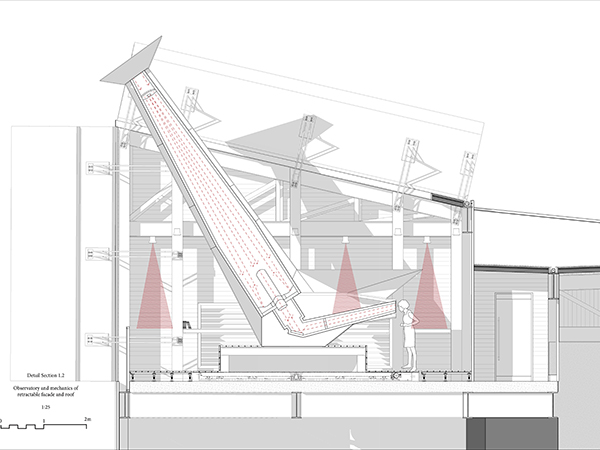The section drawings expose the way in which the project provides ways of seeing and understanding site, context and history of Tallangatta.
Both the architecture and visual representation of the project were borne from critical processes of collage and abstraction, enabling new readings of Tallangatta to be explored. The section reveals how the project aims to hold space for a meaningful relationship between conditions of ground and sky, whereby significant architectural features mediate the two.
Since the 1950s, The Murray River has been diverted, dammed, and disfigured into a regulated and artificial system. The Hume Dam is one such irreversible scar which has drastically impacted surrounding towns, such as the town of Tallangatta.
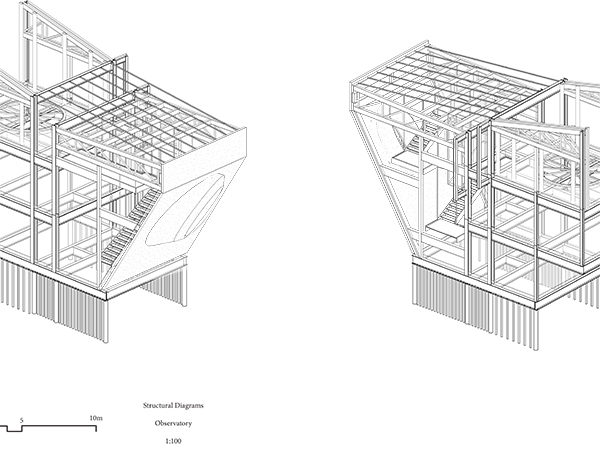
Drowned as a result of the expansion of the Dam in 1956, Tallangatta was reborn. Old Tallangatta now exists as submerged traces in the landscape, while present day Tallangatta, largely consisting of buildings relocated during the flooding, is known locally as ‘The Town that Moved.’ This thesis provides modes of observation to allow for the deeper histories of these twin towns to be understood.
This thesis examines the primary question: ‘How can architecture acknowledge individual and collective memory, while also working to support changing identities, through providing different ways of seeing?’.
This thesis explores this question through the design of an astronomical observatory and bunker complex located in Tallangatta.
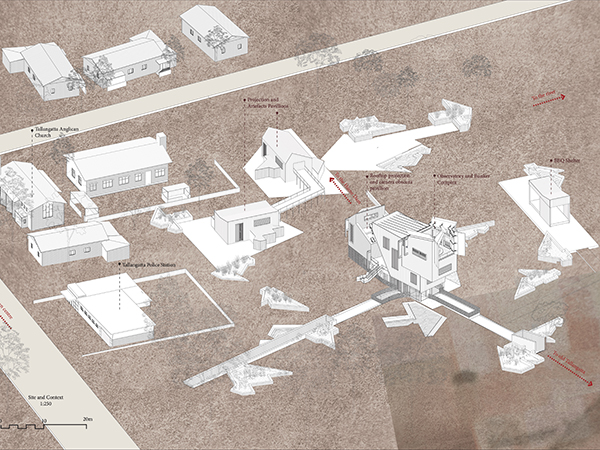
The project aims to acknowledge tangible memories of Old Tallangatta, now existing as remnants of film, photographs and artifacts. It also interacts with broader, present-day issues in the North-East Victorian region, such as the need to provide alternatives to agricultural land use, and the increasing prevalence of bushfires.
The project thus contributes to a collective North-Eastern vision of industry towards astro-tourism, as well as providing subterranean bushfire refuge. This project aims to preserve memories of a town irrevocably changed by the damming of the Murray River. However, it also responds to the evolving needs of the region, and reframes present day Tallangatta, through devices for seeing.
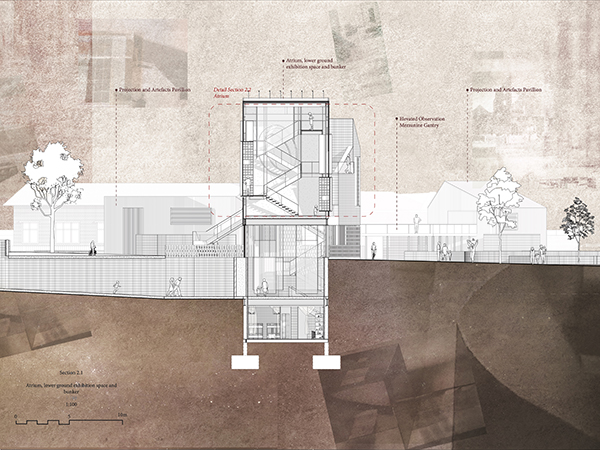
Hermione Hines is a passionate Master of Architecture student at the University of Melbourne. Having also completed her Bachelor of Environments there, majoring in Architecture, her architectural education has thus far encompassed an interdisciplinary practice.
She celebrates the process of design through visual art, research, and building, seeking to create contextual designs that provoke curiosity and questioning. She believes that experiential qualities of architecture can create projects which rearticulate and enrich connections between people and place.
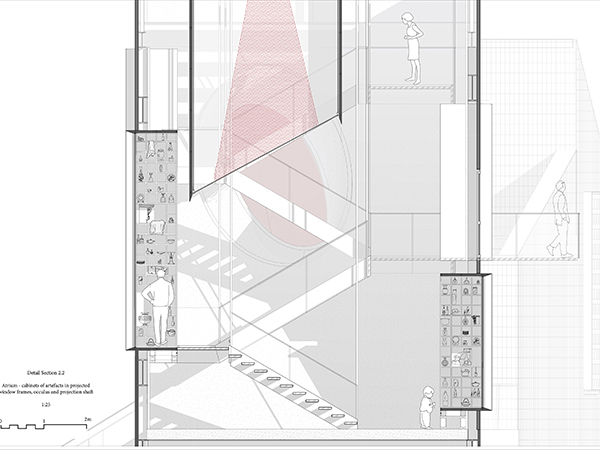
The section drawings expose the way in which the project provides ways of seeing and understanding site, context and history of Tallangatta. Both the architecture and visual representation of the project were borne from critical processes of collage and abstraction, enabling new readings of Tallangatta to be explored. The section reveals how the project aims to hold space for a meaningful relationship between conditions of ground and sky, whereby significant architectural features mediate the two.
